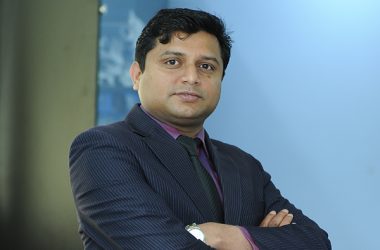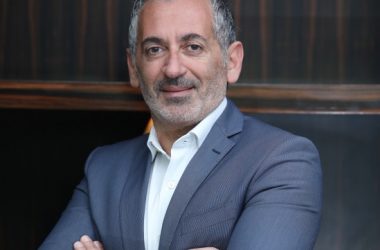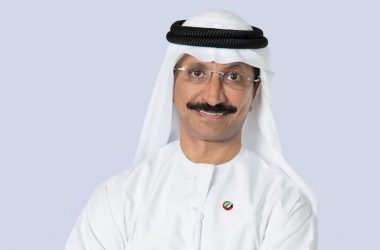 When Emirates Bank merged with National Bank of Dubai, creating a behemoth with around 8500 staff, 120 branches with 15 plus office locations and 700 odd ATMs, it warranted an IT infrastructure platform that could keep pace with the ever-growing business requirements and scale up to provide the required performance levels.
When Emirates Bank merged with National Bank of Dubai, creating a behemoth with around 8500 staff, 120 branches with 15 plus office locations and 700 odd ATMs, it warranted an IT infrastructure platform that could keep pace with the ever-growing business requirements and scale up to provide the required performance levels.
The merger posed significant challenges for the merged entity’s IT department. The team was mandated with the daunting task of bringing together networks, applications and systems, connectivity between legacy data centers, which would finally enable cut over of the new Infosys Finacle core banking system.
Emirates NBD embarked on building a new data centre at Al Barsha with the vision of it being the primary information processing facility, catering to the growth of the group. “Al Barsha data centre was a key milestone on our strategic roadmap for the merger. Our vision was to build a state-of-the-art information processing facility that would provide a scalable, highly available, and a physically and logically secure computing environment,” says Abdulla Qassem, Group Chief Operating Officer.
“When we started construction, we took into account the requirements of the merged entity and divided our plan into phases. The phase one went live with 110 rack of computing equipment in 2008, and we started working on the second phase immediately, which was completed by December 2009,” says Sajid Lokhandwala, VP & Head of IT Infrastructure.
The implementation of second phase meant expanding pretty much every element in the data centre including cabling, networking and security with the phase in full production mode, hosting mission-critical services for the bank. This was carried out with zero downtime and the data centre has achieved 100% uptime ever since the phase one went live in 2008.
The 18,000 square feet facility, which currently houses 400 odd servers, has been designed based on ANSI/TIA-942 Tier-3 Data Centre standard providing N+1 redundancy. “From an availability perspective, every single component is redundant in this data centre, from networking to cabling to power provisioning and even in terms of data centre utilities,” says Lokhandwala. Power redundancy is achieved though three UPS backed up by two diesel-fueled generator sets with external refueling facility during operation to ensure that the data centre is always running, even in the case of extended power outage.
Emirates NBD has adopted green concepts while designing its data centre, which has led to significant Opex gains. Apart from consolidation and virtualization, much energy saving equipment have been deployed including lights integrated with motion detectors, energy efficient chillers, water cooled racks for high density servers and variable frequency drives (VFD). The centre follows the classic hot and cold isle concept for their cooling requirements. “We spent nearly one and half months, just on allocating server locations in terms of which server goes into which rack and which location in the data centre to adhere to airflow, power and networking requirements,” says Lokhandwala.
The campus network is fully redundant with multiple layers including core, aggregation, access and DMZ segments. The bank’s WAN dovetails all locations with gigabit speed MPLS links provided by Etisalat. “One of the key challenges during the merger was to bring all the branches together in terms of connectivity, bandwidth and technology. Various locations were operating on various legacy technologies, and we worked along with Etisalat for nearly 10 months to implement standard connectivity across all branches. We use MPLS wherever the service provider has been able to provide us with the technology, replacing ATM, leased lines and frame relay,” says Lokhandwala.
Emirates NBD’s facility also makes for a good case study of following best practices in data centre cabling. The data centre, which has around 210 km of networking cabling, uses category 6 for copper connection and OM3 multi-mode fibre for network uplinks and SAN connectivity while single mode is used for telecommunications links. “From a cabling perspective, each and every passive component has a redundant path and we also ensured that one of the cable run is under the raised floor and another one overhead via cable runners positioned over the racks. The idea behind this diverse route is that in future any kind of maintenance should not have any kind of impact on the availability. We have also cabled all the racks upfront, to ensure rapid deployment of new equipment and to avoid disruption in future,” says Lokhandwala.
Another unique feature is intelligent cabling which allows for any cable endpoint to be traced at any given point of time, right up to the server from the core and access layers in addition to centralized management of cable patching and fault detection.
The bank’s data centre is monitored 24/7 though a network operation centre (NOC) which provides a logical view of the servers, performance and capacity of the systems. The centre is equipped with log screens that drill right down to performance levels of various critical systems and different thresholds of individual systems including networking and storage performance and feed into a remedy system, which automatically generates incident tickets for the help desk. In addition to the NOC, another key aspect of the data centre is its Building Management System (BMS) console, which monitors all the physical facilities such as UPS, chillers, generators, input power and other utilities.
Currently, Emirates NBD supports all lines of business and back-office applications from this data centre, as well as the network and communications needs for its employees. “This greenfield data centre has allowed us to consolidate the entire computing requirements of the group and provide guaranteed performance levels to our customers, both internal and external, and non-stop availability of services. Currently, we are at around 40% capacity utilization and once we complete migration at the end of the year we will be at 65%, still leaving enough room for future expansion plans,” says Lokhandwala.
The bank plans to leverage on the existing technologies this year. “Over the last three years, we have made the right investments in building a robust core platform. At the moment, we are focusing on new technologies for data centre consolidation, server rationalization and optimum utilization of resources available,” says Lokhandwala.





